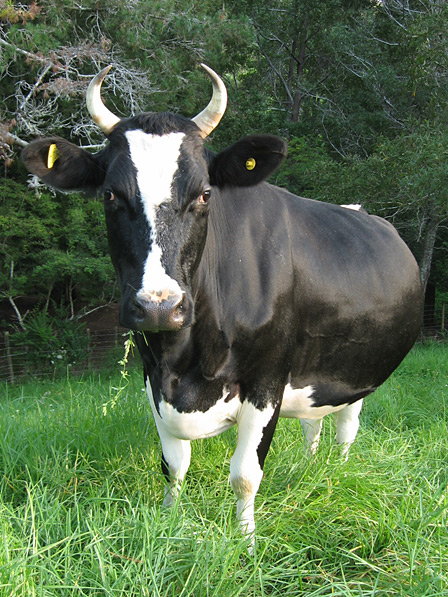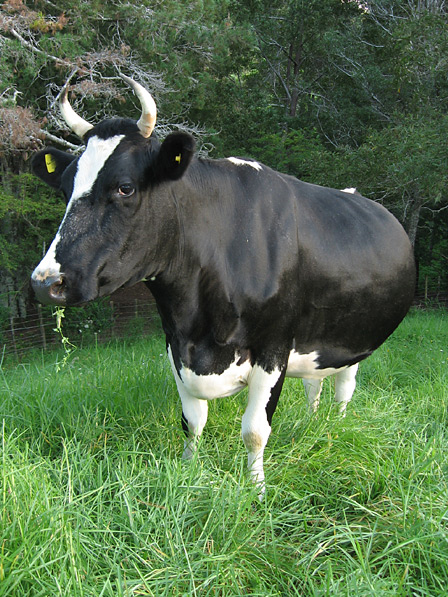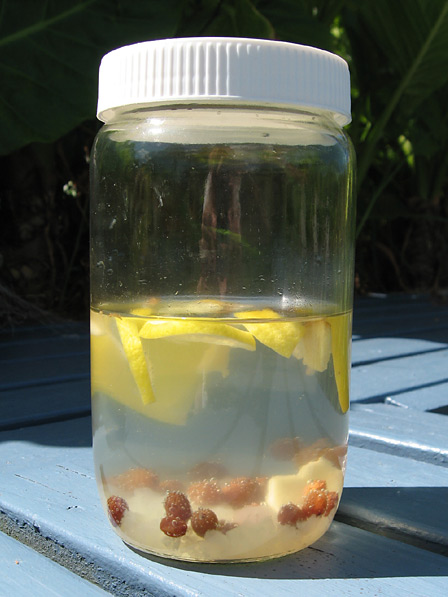We are looking out the windows at a sodden and misty world. It rained cats and dogs for all of yesterday afternoon and last night. When I woke up this morning, it was still raining. I sneaked out during a lull to tend to the goats. The forecast yesterday predicted that we would get 100-150mm of rain overnight, and it surely felt like we did! Kevin and I are already getting a lot of use from the heavy-duty waterproof coats and pants that we felt driven to purchase after the last heavy rain. The rain is much lighter today, but since it is still too wet for most outside jobs, I thought this might be a good time for an update on some of the things that are going on around here.
Autumn Planting
We have built two new pea frames, and I will probably soon put on my rain gear and plant out some more of the pea seedlings that we have started. I hope we haven’t left it too late to get a good crop of autumn peas. Time will tell! Of course, every year is different, but I’m keeping a record of planting dates, so that we can refine our timing as the years go by.
Fruit
A while ago, I started seedlings for passionfruit (mostly purple ones, and a few golden), cherimoya (also known as custard apple), and red tamarillo. By now, the tamarillos and some of the passionfruit look ready to be transplanted into the garden. We are thinking of putting a couple of the tamarillos in the rather sheltered bed next to the house, since they are quite frost tender. For the passionfruit, we will have to extend the trellis system that we have started on the western side of the house paddock.

Young passionfruit plants
Joining a Co-op
We have arranged to join a co-op, so that we can buy our bulk organic goods at wholesale. We are looking forward to less packaging and better prices. We will place our first order this weekend if the catalogue arrives in time. Otherwise, we’ll have to wait two more months for the next order to go in.
Goat Fence
Work on fixing the fence around the uphill goat paddock is underway, though of course it has been suspended with the wet weather. Kevin was finding it hard going, since Daphne and Lulu were very keen to taste each fence fixture as he tried to nail it into place. They were also sure that the bag of fence fixtures must contain tasty treats for goats. And anyway, why would Kevin be in the goat paddock at all if not to cuddle and play with his dear little goats?
Harvest
I have canned several more batches of tomato puree, by now. We have quite a little stock of it in the cupboard to enjoy during the winter months. Our bell peppers (mostly red and a few yellow) are also very prolific. I picked a whole bucket-full the other day, and I’m thinking we might try to make a lacto-fermented pickle out of some of them. Perhaps we’ll roast them and remove the skins before fermenting them as per the recipe in Nourishing Traditions. Does anyone out there have any advice or suggestions about lacto-fermenting sweet peppers?

Sweet yellow pepper
Earthworks
We have been in touch with Barry, the digger operator, who will level the site for our much-needed cow shed. He plans to do the work next week, although it’s possible that this wet weather may delay him somewhat. While he’s here, he’s also going to dig out a dam for us. A dam can cause major problems if not properly constructed, so we have taken extra care to choose an experienced digger operator with an excellent reputation. There are a lot of things to think about! The site for the cow shed needs to be big enough to fit the large water storage tank that will sit next to the shed. We need to figure out what to do about drainage and overflows. We also need to make arrangements to save the topsoil that the digger disrupts, so that we can spread it over the wounded subsoil and plant it as soon as possible after the job is finished.
We feel blessed to have lots of rain filling the streams and making our gardens and pastures grow. At the same time, we look forward to having some fine days to keep working on outside jobs — especially the big projects of earthworks and shed construction that have to be finished by July when the calves are due.



